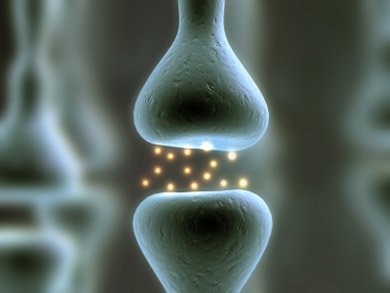Home » Translational Research » Research Highlights » Here
In this section
Pain: on the Molecular Level
 One-third of the world’s population suffers from persistent or recurrent pain.
One-third of the world’s population suffers from persistent or recurrent pain.
Although successful treatments for chronic pain do exist, many are inadequate for some conditions or cause unacceptable side effects. In addition to human suffering, chronic pain results in severe economic loss. For example, migraine, a vascular pain syndrome, costs an estimated $19.6 billion annually in the U.S. alone.
Scripps Translational Science Institute (STSI) researchers hypothesize that a better understanding of Transient Receptor Potential (TRP) ion channels will provide new and novel targets for developing more effective and safe therapies for chronic pain. TRPs induce the release of neuropeptides that can produce vasodilation and cause migraine.
The TRP ion channels play a role in temperature as well as pain sensations, which are closely interrelated. The STSI researchers regard the temperature-activated channels, which represent a new class of TRPs that are dubbed thermoTRPs, as important clues to understanding how neurons “sense” pain at the molecular level.
The STSI scientists are rigorously cataloguing the genetic variations of human thermoTRPs and establishing links between human variations in these ion channels and their activity. Their findings may establish for the first time a relationship between TRP ion channels and human variation in pain sensation.
Conducting the study are a Scripps Health physician and four leading scientists at The Scripps Research Institute (TSRI) and Scripps Genomic Medicine (SGM).
The physician (Christy Jackson, M.D.) specializes in the treatment of patients suffering from migraine, while the TSRI scientist (Arden Patapoutian, Ph.D.) identified the first gene involved in humans’ ability to sense cold temperatures. The gene encodes for a protein that belongs to TRP channel family.
The SGM researchers include Sarah Shaw Murray, Ph.D., Director of Genetics; Sam Levy, Ph.D., Director of Genome Sciences; and Andrew Carson, Ph.D., Research Scientist III.
The five scientists are focusing on 16 genes, including six TRPs that are relevant to somatosensation. They have sequenced the genomic intervals encoding these 16 genes in blood samples obtained from 30 juvenile patients who suffer from chronic migraine and at least one of their parents, and 90 individuals who do not have this or other pain disorders.
The scientists are now cataloguing both the amino acid variants and noncoding variants in evolutionarily conserved elements. They then will compare the alleles that they have catalogued in the migraine patients to the alleles that they’ve discovered in the individuals without migraine and other pain disorders.
To analyze the functional consequences of the amino acid variants that differ between these two groups, the researchers will construct point mutations in the thermoTRPs that represent these natural alleles and then investigate their activity in response to temperature and chemicals in heterogonous cells. Subsequent experiments with human patients hopefully will identify the alleles’ associations with different behavioral responses to sensations.
